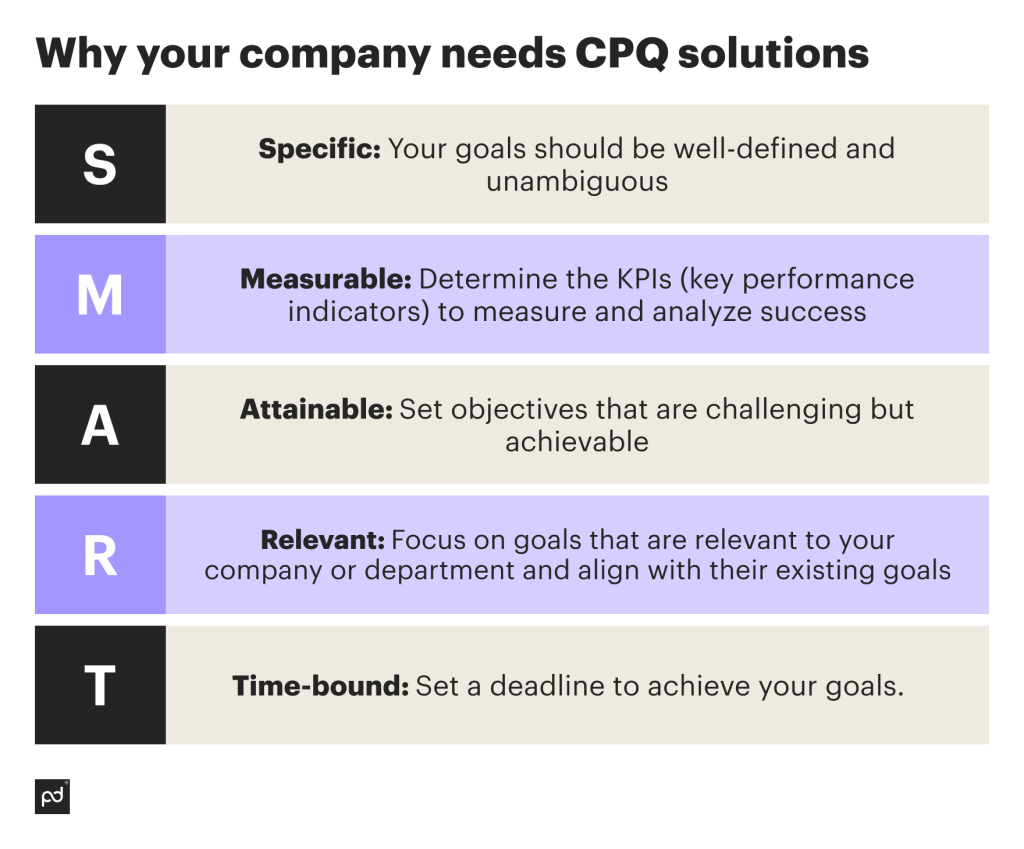Over 70% of marketers rely on marketing goals to stay the course and measure their marketing campaign’s success.
If you’re one of these marketers, you know defining achievable and actionable objectives to achieve long-term marketing goals is mission-critical, and if you’re trying to become like one of these marketers, this guide is here to help.
In this article, we discuss marketing objectives and share a few examples to help you come up with marketing objectives for your own company.
What are marketing objectives?
Marketing objectives are clearly defined goals defined as part of a marketing strategy.
They serve as a blueprint for the marketing team to achieve desired business outcomes and allow the marketing team to measure their overall marketing performance.
Suppose your marketing goal is to improve your company’s social media presence.
You can break this into bite-sized, measurable objectives — like achieving 1,000 new followers per week on Twitter, Instagram, and LinkedIn for the next six months through innovative posts.
Quick tip: It’s necessary to write a SMART marketing plan to propel you to success.
Why should marketing objectives be SMART?
On average, companies across industries set aside nearly 9.5% of their revenue to fund marketing initiatives.
Since there’s big money at stake, you need SMART goals. Here’s a quick overview of what SMART stands for:

10 Examples of marketing objectives
Listed below are examples of marketing objectives you can draw inspiration from:
1. Boost brand awareness
Marketing objective: Increase brand recognition from 20% to 25% by the end of the quarter via social media.
When running campaigns to increase brand recognition, think about the way your customers perceive your brand and how.
Do they think about you because of your excellent product (e.g., Nutella), do they recognize you because of your values (e.g., Ben & Jerry’s), or do they remember you because of your logo (e.g., H&M)?
If your marketing objective is to increase brand recognition, first drill down what you want to increase it for — after all, certain brands are famous for being infamous.
Once that’s done, consider:
- Partnering with influencers and/or sponsoring events that have the same values as you or promote the same things you do.
- Being consistent with your customer interactions —- repetition is key when trying to boost brand awareness, especially if you want to be on the top of your customer’s minds.
- Using all marketing channels (e.g., social media, physical ads, website content, etc.) to your advantage to double down on the same objective.
2. Increase sales
Marketing objective: Increase sales for product X by 5% in the next two months by running paid ads on Google Ads.
Boosting sales is a short-term marketing objective that contributes to achieving your long-term revenue target.
There are various ways to get those sales rolling in.
For example, marketing can help your sales team with educational content that introduces your product or service to your target audience.
Sure, you can acquire consumers from multiple sales channels.
But upselling and cross-selling are great low-cost strategies to increase the average billing amount per transaction.
Amazon upsells Prime by showing its customers how upgrading comes with great benefits.
Amazon also cross-sells by displaying product recommendations based on things you’ve added to your cart or purchased.
3. Expand lead generation sources
Marketing objective: Explore lead generation sources and select two viable ones by the end of the current year.
Not being overly dependent on just one channel will allow you to expand your lead generation sources and explore new markets.
It’ll also help you reach diversified consumers and educate them about your product.
Capitalize on the four L’s of lead generation — lead magnets, landing pages, lead capture, and lead scoring — to curate a comprehensive plan.

At the end of the deadline, determine the marketing channels that are gaining the most traction and if you should continue with the current strategy or shake things up.
Coca-Cola is a good example of a brand following the lead diversification marketing objective.
Its unique lead-generation strategies have allowed it to capture a 14% volume share of the beverage consumption market in developed countries.
4. Improve website traffic
Marketing objective: Improve website traffic by 10% through consistent on-page and off-page efforts.
Website visitors are essential to generating qualified leads and achieving the benchmarked top-of-the-funnel sales figures.
It gives you a better chance of converting them into paying customers.
But for that to happen, you need to focus on search engine optimization (SEO) to improve your search engine rankings and enhance brand visibility.
Undertake link building, optimize existing content, target focus keywords, and effectively blend content marketing with SEO.
Once you’ve potential customers landing on your page, engage with them immediately.
Help them understand your product and services better and add actionable CTAs through the page to encourage them to take the desired action.
Employ conversion tracking metrics like conversion rate, cost per lead, and campaign ROI to track the progress.
5. Launch new product
Marketing objective: Finalize the new product’s marketing angle by the end of the week.
A product launch is the ideal opportunity for companies to:
- remain relevant,
- entice customers with a better version,
- get new customers,
- keep up with the advancements in technology, and
- diversify revenue channels.
Setting marketing objectives before a product launch will ensure you complete all the tasks promptly.
Be clear about your objectives, whether it’s to put a price tag, establish the messaging, prepare a product launch marketing plan template, gather early product reviews, build awareness, or monitor adoption.
Gillette’s Planet KIND product line focused on how the range reduces plastic waste and is environment-friendly rather than its efficacy.
This lets the brand appeal to environment-conscious consumers and get them to advocate the products.
6. Venture into new markets
Marketing objective: Research the businesses dominating the target market and develop the right marketing strategy by the end of November.
Venturing into new markets — nationally or internationally — is a challenging task.
However, thorough market research and careful positioning will help you understand the market and tweak your messaging accordingly.
Innovative marketing campaigns will let your product stand apart, gain more eyeballs, and foster genuine customer relationships.
Netflix started as a video-on-demand company in California but market research and clever campaigns have allowed it to garner over 247 million paid memberships and expand to more than 190 countries.
7. Enhance customer lifetime value (CLV)
Marketing objective: Enhance CLV for Consumer Segment A from $13,650 per quarter to $15,000 by the end of the second quarter.
New customers aren’t enough to sustain a business.
Give your customers what they want to reduce customer churn and ensure they become loyal brand ambassadors.
To re-evaluate your marketing strategies for varied customer segments, measure its CLV to understand how much they’ll spend on your products and services.
You can use the following formula to calculate the CLV:
CLV = Average Purchase Value * Average Customer Lifespan * Average Consumer Lifespan
A deep dive into any of the three KPIs will help you understand the segment better and tweak the milestones accordingly.
Nike’s Hong Kong team improved its CLV by incorporating local sports movements and roping in national athletes in its digital marketing strategy.
8. Define brand positioning
Marketing objective: Define brand positioning by the end of the month to stand out from the competition.
Brand positioning impacts how customers view your brand and engage with it. It’s part of your identity and helps convey your value prop.
For example, Tesla positions itself as an innovative and sustainable electric automaker.
This clear positioning has helped it become the top choice for electric automobile buyers and be crowned as one of “America’s Hottest Brands.”
9. Better product quality
Marketing objective: Launch the upgraded version of the mobile app with zero lags.
Consistent improvements have a compounding effect. Focus on improving your product or service a little every week, month, and year.
As you work on improving product quality, you’ll also improve customer experience, boost sales, and build trust.
10. Increase revenue and profit
Marketing objective: Market product C and improve its quality to raise the prices next year and boost revenue and profit.
Increasing revenue and maximizing profit is a business’s ultimate goal.
It can do so by identifying the products and services it can sell more, cutting down unnecessary costs, and building demand among consumers.
You can also take advantage of new opportunities and promote a better brand image by keeping an eye on marketing trends and insights.
Apple generated a revenue of $89.5 billion in the fourth quarter of 2023 by capitalizing on selling iPhones.
To increase its revenue in the upcoming years, it plans to become carbon neutral by 2030.
Achieve your marketing goals with SMART objectives
Setting SMART goals is an excellent starting point.
But to achieve your goals, you’ll need to manage a team, communicate effectively, and report to stakeholders.
Things can become overwhelming rather quickly.
But PandaDoc can make things a little easier by minimizing the stress of managing documents.
If you’re looking for a solution to automate your documents and save time, give PandaDoc a try — it’s free to try.
Disclaimer
PandaDoc is not a law firm, or a substitute for an attorney or law firm. This page is not intended to and does not provide legal advice. Should you have legal questions on the validity of e-signatures or digital signatures and the enforceability thereof, please consult with an attorney or law firm. Use of PandaDocs services are governed by our Terms of Use and Privacy Policy.


